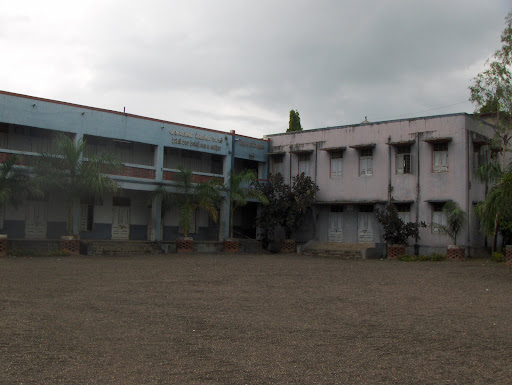
I went there to visit Kadod High School, the largest and most prominent school in Kadod and the surrounding area (almost 100 years old; currently about 2,000 students enrolled). I was there as a guest of an organization called Nanubhai, managed by a former McKinsey consultant named Raj Shah. Nanubhai funds initiatives within the school with the general goal of delivering the best quality education and sending the most possible kids to the top universities in Gujarat. I met Raj over email when he was recruiting Stanford undergraduate students to join an internship program for Nanubhai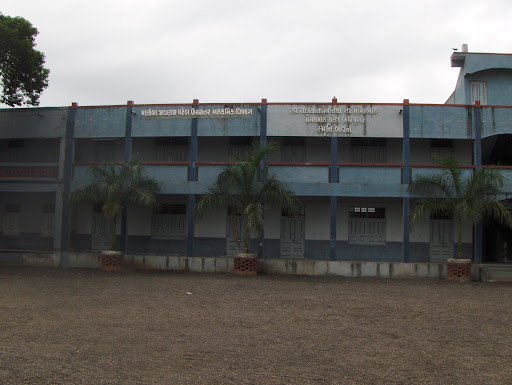 which was starting this summer. I told him I was interested in learning about the org’s work and that I would be in Gujarat over the summer, and he asked me to go and visit the school if I had a chance. Specifically the school has just started (through Nanubhai’s support) a new computer education program and has set up two computer labs at the school. He wanted me to check out the program and facilities and report back on the current state of things, as well as to make recommendations on how to take the program forward in the most effective way. I thought it would be good exposure and learning opportunity so I accepted the invite and visited the school this week.
which was starting this summer. I told him I was interested in learning about the org’s work and that I would be in Gujarat over the summer, and he asked me to go and visit the school if I had a chance. Specifically the school has just started (through Nanubhai’s support) a new computer education program and has set up two computer labs at the school. He wanted me to check out the program and facilities and report back on the current state of things, as well as to make recommendations on how to take the program forward in the most effective way. I thought it would be good exposure and learning opportunity so I accepted the invite and visited the school this week.
There is just a ton to say about the two days, which was totally action-packed, educational, fun, and exhausting. Rather than a strictly chronological retelling of events, I’m going to stick to the Dheduki post-style and write a bunch of mini-stories which are fun, informative, or both. By the end I probably will have covered all the important stuff.
The Interns
During my visit I stayed with the two Stanford undergrads that Nanubhai hired as interns, Charishma and Lakshmi. They have been at Kadod High for the last month and have been teaching Spoken English classes in addition to evaluating the school on behalf of Nanubhai. We had a blast hanging out and living together in their special guest house which was on the schoolgrounds itself. I got the sense early on that they were a little tired of the faces/personalities around them and were happy to have someone new to talk to. Charishma I knew from before because we both took Beginner’s Hindi last year at school, but I was meeting Lakshmi for the first time. We spent a lot of time talking about Kadod High and I got a good sense of what they saw as the problems with the school’s education programs, particularly the English instruction, as well as their day-to-day challenges as two girl NRIs working in a rural school. Lakshmi was also anxious to gossip about Indians at Stanford, and since I’m hip to the undergrad crowd by way of Chardi Jawani, we spent a good amount of time ripping on people from school. That was fun.
schoolgrounds itself. I got the sense early on that they were a little tired of the faces/personalities around them and were happy to have someone new to talk to. Charishma I knew from before because we both took Beginner’s Hindi last year at school, but I was meeting Lakshmi for the first time. We spent a lot of time talking about Kadod High and I got a good sense of what they saw as the problems with the school’s education programs, particularly the English instruction, as well as their day-to-day challenges as two girl NRIs working in a rural school. Lakshmi was also anxious to gossip about Indians at Stanford, and since I’m hip to the undergrad crowd by way of Chardi Jawani, we spent a good amount of time ripping on people from school. That was fun.
English Class
Charishma and Lakshmi co-teach a spoken English class before and after school hours for 8-12 standard students. In India there is this peculiar system in which a student effectively has two sources of education: regular school, and “extra” classes which are like tutoring classes where they review what they learned in normal school. Extra classes (a.k.a. “tuition” classes) happen before and after normal school (which runs from 11-5) and gives more personal instruction, practice, and reinforces important concepts in preparation for the all-important board exams that every Indian student takes in the 10th and 12th standards. Tuition classes come in paid and free forms, and they are a big determinant of how well a student does on the boards. Obviously paid classes are of higher quality, so you see how socioeconomic status creeps into achievement in the school system. You may ask why normal school isn’t either more hours or of better quality or both. Well the answer to the former is that some kids can only attend school during those hours because they help their parents at the home/farm during the morning and evening, or they have to travel long distances to/from the school (remember Kadod is exceptionally large and well-resourced for a village school, so students come there from all over. It’s this Indian phenomenon of stretching the quality resource as far as possible because they're so rare). Regarding why quality is not better, you may guess there are a million reasons why, but the one that stands out like a thorn in the chapal is that government schools like Kadod High have a responsibility to a government curriculum. This means that the teachers are prescribed exactly the material they have to cram into their students, and there is big time pressure to get through all the material. This is where the familiar criticism of rote memorization as a learning method in Indian education comes from. Basically teachers have a short leash to be creative with their lessons because getting through the government curriculum is their primary responsibility. And this also explains where extra classes come from. Teachers spend the class period zooming through the material with little or no time to stop and make sure that the students are even understanding anything. And the students usually don’t, so they just copy the board for an hour and then rehash it in tuition before and/or after school.
Long tangent but this brings us back to Lakshmi and Charishma’s Spoken English class. The class was an “extra class” so it wasn’t part of the 11-5 actual school time, though it wasn’t a typical tuition class because it was offered free of charge and at the school itself (private tuitions are often held in the tutor’s home/office). They taught several age groups, the youngest being 8th standard (13-14 year olds), oldest being 11th. The level of proficiency with English varied with these kids from being able to understand slow English and speaking simple sentences to just barely being able to understand slow English. For the majority they knew how to read and write but their comprehension and articulation was very weak. A fundamental problem was that although English is part of their government curriculum, it is effectively these kids’ 4th language behind Gujarati, Hindi, and Sanskrit. You can’t know a language without practicing it, and also there’s a difference between learning a language and knowing it. The girls saw this very quickly when they observed the current English classes at Kadod High. The students are taught complex grammar rules about gerunds and past participles, but you cannot hold a 2 minute simple English conversation with them. They say things like "I am go!" to mean "I’m going". Most sad (and also hilarious) was the results of an assessment test the girls gave to the students two weeks ago. They were dismayed to see that most of the kids were completely lost when being tested in a way where they couldn’t rely on memorization. The test results were funny because they wrote sentences like "I have a George" and "The principal is a come".
So Charishma and Lakshmi decided that they were going to focus their classes on getting the students to actually communicate in English, which they felt was more important than being able to spell correctly. When I was there they did a couple fun activities like having them write a story with pictures and creating a Kadod High newspaper complete with main story, sports (report on the recent inter-school Kabadhi tourney hosted at the school), comic strip, and gossip column. But by far the coolest activity we did was "Fill in the Song Lyric". What we did was write the lyrics to an English song on the board and leave blanks that the students had to listen for and fill in while they played the song. The girls both had their IPods so they had a lot of choice, but in a genius move they used “Here Come the Sun” by The Beatles. What an amazing song. I don’t listen to the Beatles much, but hearing this song 10 times in 4 different classes made me fall in love. And the kids loved it too. Even in the most rowdy class, the room became silent as they strained to hear Lennon’s voice. It was actually quite something to see a bunch of village kids in India happily singing along to The Beatles, and it was totally hilarious hearing them with their accents saying stuff like “Little darling, it’s been a long, cold, lonely winter”. But it totally worked and it was a hit in every class they tried it in.
Spending a couple days in a isolated place like Kadod made me pretty grateful that I was staying in a dynamic city like Baroda. The girls don’t have a whole lot of options as far as unwinding and/or having fun. The first day I got to Kadod though, there was a village celebration of the end of a 5-day fast for the village's women. It was celebrated at a bridge/causeway of a nearby river. It was pretty much like a village block party. People dressed up in colorful outfits and strolled around and socialized. We went there and took in the scene, played around with some of the kids who had come out, sat near the water, etc.
For the girls, they are pretty much on the school premises all day since their guest house is there. The house itself is pretty nice. They have their own bedroom, bathroom, living area, computer with dial-up Internet, and are served lunch and dinner every day. Food was OK, didn’t compare in taste or quality with what I get at the ashram. We found a hair in our food at each meal we sat down to while I was there. Tasty.
The Students
If you’ve ever visited a village, you know how nuts kids get when they hear that an outsider has come. They were just enthralled at my presence, and the news about my arrival spread like wildfire. Everywhere I walked I drew crowds, you can even call them swarms, of over-eager teenage boys who wanted to know my name and where I was from and what I was doing. They cornered me in the halls wherever they could. They started causing a ruckus when I began shaking their hands as I passed by; soon I had 25 little hands thrust at me from all directions. When I walked into a class, no matter how quietly and despite entering and sitting in the very back corner, I would cause a minimum 2 minute disturbance to the teacher as the students lost attention and focused on my presence. Seriously, it was the closest I’ve ever gotten to feeling like a celebrity.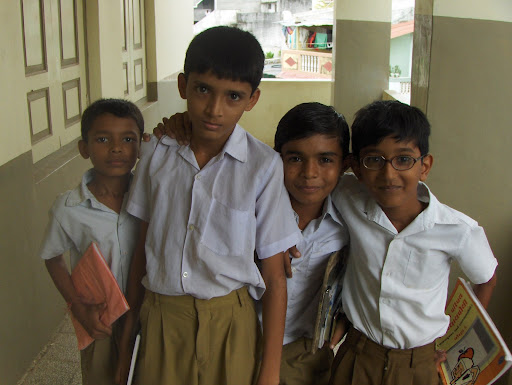
I also had to be careful about bringing out my camera. Whenever I did, kids would become completely fascinated. If I started snapping in a hallway, kids would run up and ask if I could take their picture. They just like standing there and getting snapped and then seeing how it turned out in the preview window.
One amusing story is about a particular student at the school, named Mitulraj. The kid couldn’t have been more than 16-17, and let me say he looks like your typical Indian fobby looking kid. Skinny, goofy, looks slightly undernourished, peach fuzz mustache, voice that makes him seem like he’s 13. But for some twisted and bizarre reason, Lakshmi and to some extent Charishma were convinced that he was hot. "He is a beautiful man" were Lakshmi’s exact words. It took a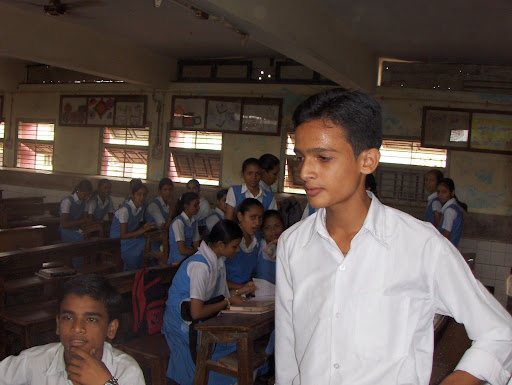 herculean effort, but I managed to snap a picture of him without him wondering why the hell I wanted a picture of just him (he’s the one standing). I told Lakshmi that she has spent way too much time in this village and that she better be careful when she got back to school because she could be jumping on the any dude that crosses her path at this rate. I conceded that he was, relatively speaking, a badass at the school, walking around usually followed by a few cronies, chewing gum, thumbs sticking out of pockets, but let’s be real… there’s no way on earth you can call the kid hot. Adding to the intrigue is that Mitulraj walked by me and Lakshmi in the hall at some point and he gave her a long look with a dirty little smirk on his face. We both busted up immediately. He definitely has a crush on her. I’m very interested to see how this plays out.
herculean effort, but I managed to snap a picture of him without him wondering why the hell I wanted a picture of just him (he’s the one standing). I told Lakshmi that she has spent way too much time in this village and that she better be careful when she got back to school because she could be jumping on the any dude that crosses her path at this rate. I conceded that he was, relatively speaking, a badass at the school, walking around usually followed by a few cronies, chewing gum, thumbs sticking out of pockets, but let’s be real… there’s no way on earth you can call the kid hot. Adding to the intrigue is that Mitulraj walked by me and Lakshmi in the hall at some point and he gave her a long look with a dirty little smirk on his face. We both busted up immediately. He definitely has a crush on her. I’m very interested to see how this plays out.
A really fun thing for you to also do is to go to the Nanubhai website and find Charishma and Lakshmi’s photoblog. At some point they had some students write about themselves and they posted the profiles up on the blog. One kid said his favorite color was white. White!?!?!?!?!!!!!!!! Have you ever heard anyone say white was their favorite color?!?! Is white even a color at all? I still can’t stop laughing about that. The girls told me that the number one most popular color amongst their boy students is pink. Only in India.
The Computer Program
Most of my visit was spent learning and observing the IT education program. Through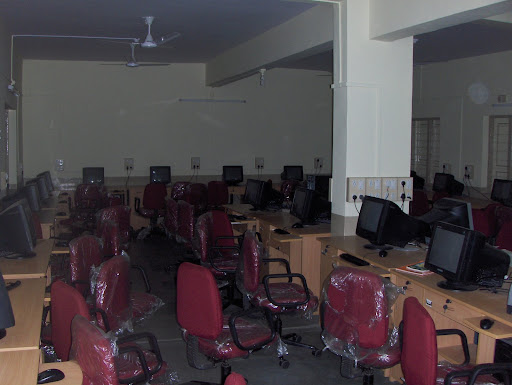 Nanubhai, the school had two extremely impressive computer labs, both with about 30 desktops on brand new desks. This is an obscene luxury for a rural school, so Kadod High and Nanubhai clearly want to make the best use of it. For the most part, I thought that they are doing fine, but much can be improved.
Nanubhai, the school had two extremely impressive computer labs, both with about 30 desktops on brand new desks. This is an obscene luxury for a rural school, so Kadod High and Nanubhai clearly want to make the best use of it. For the most part, I thought that they are doing fine, but much can be improved.
An artifact of the government curriculum imposition is that there are two types of computer classes for every standard: "Theory" and "Practical" classes. Theory class isn’t about Turing Machines, The Knapsack or Traveling Salesman Problems, or NP-Completeness like what any sane person would think a computer theory class would be about. Theory just means a computer class without the computer. So for example in an 8th standard class, they were learning HTML, so the teacher had a student read from the textbook descriptions of ol, ul, b, etc., interrupting him periodically to elaborate on how each of the tags worked (all in Gujarati). At the end of the class the teacher asked the students if there were any tags that they went over that they didn’t understand, and one nervous student said all of them. Then he had one student go to the board and write the HTML for a simple unordered list, and when he couldn’t do it he slapped him upside the head. It was my first time ever witnessing physical punishment in a classroom. It was actually pretty funny… the teacher did it half-jokingly and the student walked away with a smile on his face for inviting the reaction.
etc., interrupting him periodically to elaborate on how each of the tags worked (all in Gujarati). At the end of the class the teacher asked the students if there were any tags that they went over that they didn’t understand, and one nervous student said all of them. Then he had one student go to the board and write the HTML for a simple unordered list, and when he couldn’t do it he slapped him upside the head. It was my first time ever witnessing physical punishment in a classroom. It was actually pretty funny… the teacher did it half-jokingly and the student walked away with a smile on his face for inviting the reaction.
In 12th standard theory class the teacher had drawn out the cells of an excel spreadsheet elaborately on the chalkboard and was explaining the formulas that would be behind the values. The problem was it took him half the period just to draw the spreadsheet; at one point he realized he messed up an entire column of numbers and had to start over. He wasn't happy and the class disengaged.
elaborately on the chalkboard and was explaining the formulas that would be behind the values. The problem was it took him half the period just to draw the spreadsheet; at one point he realized he messed up an entire column of numbers and had to start over. He wasn't happy and the class disengaged.
I thought the best theory class was for the little 5th standard kids. In there the kids are learning about the different types of computers: supercomputer, mainframe computer, PC, palmtop, etc. The descriptions of the differences of these devices from the Gujarati textbook were amusing. They compared them by explaining that a supercomputer does the work of 100 men, while a mainframe of 10 men, etc. I volunteered my laptop to the teacher so he could show them in class a live example of miniaturization. They were dazzled.
In practical computer class, the students went into the labs and actually worked with the computers. For the youngest students, all they would do is open up notepad and type names of animals and fruits in English on each line. For the entire class period . Day after day. In the classes for older students, they would practice writing HTML and in one class they even wrote a "Hello, World!" C program.
Among many problems with this, the main one I saw in practical class was that even the oldest students were missing the fundamentals of computer usage. First, I didn’t see one kid who knew how to type properly. Some of the older kids couldn’t even double-click an icon proficiently. So wait, you are teaching them to compile and run a C program but they don’t know how to type or double-click an icon? Something’s missing here. It’s the same kind of thing we observed in the English program. The notion of learning is hollow. They are being taught the past participles and gerunds of computers, but they can’t hold the equivalent of a 2 minute conversation with one.
Recommendations
So what did we recommend? At the end of my second day the girls and I sat down with the principal to discuss what we had seen. He’s been at the school for 30 years, an old-fashioned kind of guy who knows English decently but speaks Gujarati because it’s easier, to the chagrin of Lakshmi who only knows Marathi. I also noticed in general from his body language and demeanor that he didn’t seem to be giving the girls much respect, talking over them and ignoring them, turning his body to only face me while one of them was talking, etc. It confirmed the frustrations that the girls had expressed to me earlier about their trouble dealing with the principal and getting him to listen to their suggestions. For example when the girls first approached him with the horrendous results from their English assessment test, he was in total denial about the tests’ results and came up with a million excuses for the students like they didn’t understand the test and they just don’t have confidence or they don’t understand your American accents. But he changed his mind when they showed him how most of the kids couldn’t spell his name correctly in English. At that point he straightened up in his chair and told them that we have a problem.
So anyway, here were our recommendations, which for the most part he accepted:
1. Get a LAN installed in the computer labs
Currently when there’s a coding exercise what happens is that the teacher writes out the code on one computer and all the students crowd around and copy it onto their notebooks, then go back to their computers and type it up. The problem is that between misspellings and slow typing the entire process of getting the file on every computer takes half the class time or more, leaving little time to actually do something useful.
2. Get a copy machine
Teachers shouldn’t be wasting half the class writing out 100 cells of an Excel spreadsheet on the chalk board every class; it’s time consuming and inefficient. They need a Xerox machine for teachers to create handouts.
3. Get rid of computer “theory” class!
Anyone who has an interest in Computer Science education (Greg) probably cringed when they read my description of what they do in theory class. You can’t teach HTML on a chalk board! They need to see the code, and then the result of the code in a browser. And while we’re here, HTML is the wrong thing to be teaching programming with. Most of the students don’t understand fundamental concepts of programming very well. For example I asked one student to change his HTML so that a word was bolded in the document. Rather than adding the tag, he went into the Notepad menu for his HTML sourcecode and tried to make the file itself bold through the font properties!
Theory class and practical class should be the same class, all held in the computer lab. The point I nailed in time and again with the principal is that learning computers for kids is all about the number of touches they get with it. Classes should allow the kids’ innate curiosity to drive their learning and only supplement that with some structure. I told him that though I thought that all the teachers I observed at the school are quite capable, they need to adopt a “learning by doing” educational philosophy with the students, especially the computer teachers.
4. A computer (and projector) in every classroom
Unfortunately the principal’s hands are tied with the Computer Theory classes; he must keep them as mandated by the government curriculum. So the next best option to bringing the kids to the lab is to bring a computer to the classrooms. This is not only mandatory for the computer theory classes, but will be very useful for any other class that can supplement textbook material with downloaded web content, tutorials, educational CD-Roms, DVDs, etc.
This is a basic requirement. There should be investments in Mavis Beacon or whatever else to get the kids touch-typing. Any sort of computer training is useless if you can’t type at sufficient speed. In fact they should invest in all kinds of educational software, especially English. Which brings us to the last, most important insight:
6. Computer and English learning go hand-in-hand
Teaching these students programming or MS Windows or Office or anything else is severely undercut by the inadequate knowledge of English. The two are highly correlated, based on what I saw. To improve achievement in one necessarily will require investment in achievement in the other.
This has become a monster post, so I’m going to stop here. Did this bore you? I could go on, but suffice it to say I learned a ton and was thankful for the experience and the chance to make two new friends (I’m loving the possibility that I could be a “popular Indian college kid” again). If you really want me to go on about anything in particular, post a question/comment and I’ll reply.

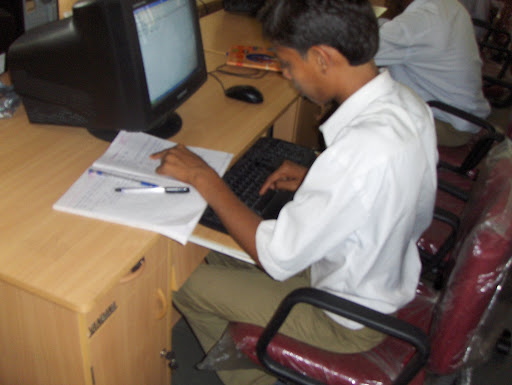
Wow, Neil, this was really, really interesting. The time crunch that teachers are experiencing to cover the required curriculum sounds a little like our No Child Left Behind program... not very promising. Are you sure you aren't exagerating the emphasis on rote memorization? Sounds hard to believe!
ReplyDeleteThat principal dude doesn't sound very cool at all.
I totally cracked up when I read about the kid writing HTML on the blackboard and getting slapped upside the head when he didn't get it right. That's how we should do things in CS3. Seriously though, the theory and practical classes need to be combined. It's cool to use the board to show structure and concepts -- but one cannot possibly teach Excel without Excel. Actually, why is Excel even part of the curriculum?
You know, my mom did not know what it meant to "double click" something when she started her very first job in the US. Someone at work had to show her. Now she is very good at double-clicking. Here double-clicking is at a very acceptable level -- she hardly ever misses a click or over-clicks. Now that's progress!
Getting the computers networked in the LAB is an absolutely brilliant idea. It would make a lot of things more efficient and promote collaboration (and maybe cheating). Does the lab have a printer?
And I think we can do without typing classes. I've been tyPiiing g WITwith tw2o finghsdgdr___ers and, I''''''''m doing f1ne.
Point taken Greg about you being fine and even, dare I say, excelling with the two finger typing approach. Although, I think the world only needs one of you.
ReplyDeleteI also laughed at the part when the kid got slapped upside the head. It was refreshing to read that teachers handle their students there the same way I handle Greg here.
Interesting post. Question:
ReplyDelete1) Is the computer class mandatory or optional?
My suggestion:
1) India needs to have ALL software translated to Hindi and regional languages. If the only way to have access is to know English... this has all kinds of effects, including - a) Access will remain in the hands of the rich. b) The idolation of English, the West, and Western values will be perpetuated and respect for Hindi and other regional language will continue to diminish. Language keeps culture alive.
Also, when "school life" does NOT resemble home life at ALL, the student feels that the knowledge that he brings to the class, the knowledge of his family, of his ancestors HAS NO VALUE; because it has no follow in the "new society" which is perpetuated by this school. The child feels like his parents are "backwards" - "They don't even know how to use a mobile phone, and I'm using computers!" When, in actuality, his parents and grandparents may hold knowledge so valuable.... how to live a happy, sustainable, fulfilled life.
SOOO... I think English and computer education is possible... ONLY if it is made relevant to their lives... ONLY if it is looked at with a critical eye.
*raises hand* Sir, 4 years late but I have questions/comments. Can we talk about this :)
ReplyDeleteu.p.